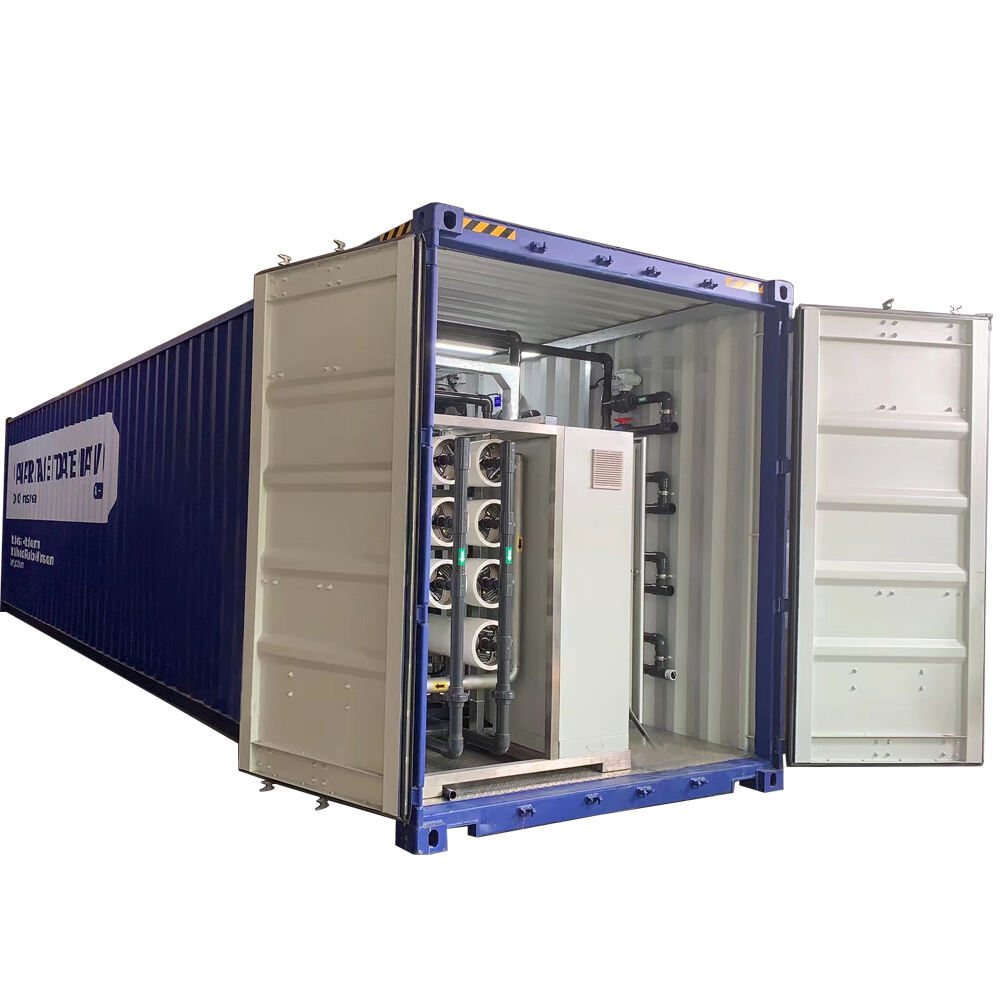Глобалниот воден предизвик
Од кога има повторливи недостатоци на слатки водни ресурси, процесот на опреснување на морската вода се разви да игра важна улога во безбедноста на водата. Реверзната осмоза (RO) се појави како најчест облик на опреснување во различни земји. Системите со висок притиска за опреснување на морска вода (SWRO) што ги нуди Guangzhou VOCEE Membrane Technology се водечки по ефикасност и по dependableност во претворањето на морската вода во неприменлива слатка и пиејќа вода.
Клучни предности на RO опреснувањето
Одлична енергетска ефикасност
Современите RO системи користат 3-4 kWh/m3 што е многу помало во споредба со термичките процеси на дејонизација. Нашите уреди за рекуперација на енергија овозможуваат рекуперација на до 98 отсто од хидрауличната енергија, што значи дека SWRO е најефикасното решение за дејонизација во големи размери на пазарот.
Компактна и скалирачка конструкција
Поголемиот концентрациски однос што е потребен кај RO погоните бара помалку простор во споредба со термичките опции што овозможуваат:
Модулна изградба
Побрза имплементација
Еластично зголемување на капацитетот
Инсталации поставени на копно како и инсталации поставени на бродови
Исключително висок квалитет на вода
Откако поминале низ строги испитувања, VOCEE SWRO системите секогаш даваат вода со желениот квалитет кој ги надминува стандартите на Здравствената организација:
Постигнати се стапки на одбивање на солта поголеми од 99,7 %.
Контролна секвенца на биофилмите
Отстранување на тешки метали и други замрснувачи
Технолошки иновации во RO десалнинација
Во нашите напредни решенија вклучуваме:
Мембрани со напреден тенок филм за висока соленост: Специјални примени за операции со повисока соленост
Паметни системи за набљудување: Оптимизација на перформансите во реално време:
Технологија против замрснување: Подолго траење на мембраните
Хибридни конфигурации: Поврзување со обновливи извори на енергија
Компаративни предности во однос на алтернативни методи
Во споредба со термичка дестилација
Смањување на потрошувачката на енергија за 40-50 отсто
Нема проблеми со корозија на висока температура
Побрза реакција на промените во барањето
Наспроти електродијализата
Напредни стапки на рекуперација
Зголемена толеранција на влезната вода
Помалку потреби од одржување
Еколошки придобивки
Современа оптична десалнина нуди:
Намалување на јаглеродниот отпечаток со оптимизација на енергијата
Намалено влијание на морето преку добро дизајнирани улази/излази
Потенцијал за работа со сончева/ветровна енергија
Намалена употреба на хемикалии во споредба со термичките процеси
Примена на VOCEE SWRO системи
Нашите решенија им служат на разновидни сектори:
Градска водоснабдување
Островни и крајбрежни заедници
Индустријска процесна вода
Воден систем за хотели и курорти
Извор на вода во итни случаи
Иднината на RO десални системи
Продолжни истражувања и развој во VOCEE се фокусираат на:
Мембраните од следна генерација со подобрен тек на процесот
Оптимизација на системите преку примена на вештачка интелегенција
Минимизирање на технологиите за отпадна солена вода
Интеграција на обновливи извори на енергија Обновливи извори на енергија долж магистралите Интеграција на обновливи извори на енергија на магистралите кај електраните Обновливи извори на енергија на магистралите
Подобрувањето на технологијата на мембраните и на дизајнот на системите продолжува да прави РО десалнизирането најефтино, достапно, енергетски ефикасно и еколошки прифатливо решение за пречистување на морската вода. Компанијата Гуангџоу ВОЦЕЕ за технологија на мембраните е посветена на полето на РО технологијата за да се бори против растечките светски проблеми со водата.

